Project Quality Management Overview
Project Quality Management (PQM) ensures project needs are met through quality planning, assurance, and control. It involves identifying relevant quality standards, evaluating project performance, and monitoring results for compliance. The processes of PQM interact with other knowledge areas and involve efforts of individuals or groups throughout the project life cycle.
Download Presentation

Please find below an Image/Link to download the presentation.
The content on the website is provided AS IS for your information and personal use only. It may not be sold, licensed, or shared on other websites without obtaining consent from the author. Download presentation by click this link. If you encounter any issues during the download, it is possible that the publisher has removed the file from their server.
E N D
Presentation Transcript
PROJECT QUALITY MANAGEMENT
Introduction Project quality management includes the process required to ensure that the project satisfies the needs for which it is undertaken. PQM includes all the activities of the overall management function that determine the quality policy, objectives, and responsibilities and implement them within the quality system.
Means of Implementation of PQM QUALITY PLANING QUALITY ASSURANCE QUALITY CONTROL These processes interact with each other as well as with the processes of other knowledge areas Each process involves an effort of one or more individual or group of individuals based on the need of the project. Each process occurs at least once in every project phase during the project life cycle.
Definition Q. What is Quality Planning ? A. Quality Planning is identifying which quality standards are relevant to the project and determining how to satisfy them It is a step required to ensure that specified standards are met
Definition Q. What is Quality Assurance A. Quality assurance is evaluating the overall project performance/system on a regular basis to provide a confidence that the project will satisfy the relevant quality standards. It is the procedures for guarding against defects and deficiencies before and during the execution of the work.
Definition Q. What is Quality Control A. Quality Control is the monitoring of specific project results to determine if they comply with the relevant quality standards and identifying ways to eliminate causes of unsatisfactory performance. It is a procedure for evaluating completed activities and elements of the design for conformance with the requirements.
PROJECT QUALITY MANAGEMENT QUALIT PLANNING QUALITY ASSURANCE QUALITY CONTROL 1- INPUTS 1- INPUTS 1- INPUTS -work results -Quality policy -Quality management plan -quality management plan -Scope statement/Contract Doc -result of quality control measurements -Operational definitions -Product description/Tech. spec -Operational definitions -checklists -Standards and regulations 2- TOOLS AND TECH. 2- TOOLS AND TECH. -Other process outputs -Quality planning tools and techniques -Inspection 2- TOOLS AND TECH. -Statistical sampling -benefit/ cost analysis -Quality audits -Evaluating Methodology -Benchmarking 3- OUTPUTS -Work permit -Flowcharting -Quality improvement 3- OUTPUTS -Mix Design /other experiments -Quality improvement 3- OUTPUTS -Acceptance decisions -Quality management plan -rework -Operational definitions -Completed checklist -checklists -Process adjustment -Inputs to other processes
PQM Approach compatibility compatible with ISO 9000 and 1000 series of standard guidelines Approaches to quality as recommended by Deming, Juran, and Crosby, and others. Other approaches such as TQM, Continuous improvement approaches and others.
Nature of PQM Project quality management must address both the management of the project and the product of the project. Failure to meet quality requirements in either dimension can have serious and negative consequences for any or all of the project stakeholders
Common understanding Quality management should complement modern project management as they both recognize the importance of : 1- Customer satisfaction 2- Prevention over inspection 3- Management responsibility 4- Processes within phases (plan do check act cycle)
QUALITY PLANNING In detail
Quality planning Quality Planning involves identifying with quality standards It is a key facilitating process during the Project planning Process In modern quality management quality is planned in and not inspected in Prior to the development of ISO 9000 series, quality planning concepts were widely discussed as part of quality assurance.
Quality Planning Flowchart INPUTS TOOLS AND TECHNIQUES OUTPUTS 1-Quality policy 2- Scope statement/Contract 3- Product description/Tech. Spec 4- Standards and regulations 5- Other process outputs 1- Benefit/ cost analysis 2- Benchmarking 3- Identification/ tracing flowchart 4- Documented procedure for queries 1-Quality Management plan 2- Inspection/Test Plan 3- Work instruction/ checklists
Quality Planning Inputs Quality policy the over all intentions and direction of an organization with regard to quality, as formally expressed by the top management In the case of a joint venture, a quality policy for the individual project should be developed The management team is responsible for dissipating the quality policy to all project stakeholders through appropriate information distribution channels
Quality Planning Inputs Scope Statement/Contract Document The scope statement is a key input to quality planning because it documents major project deliverables as well as project objectives which serve to define important stakeholder requirements
Quality Planning Inputs Product description/Technical Specificat. Although the elements of the product description may be embodied in the scope statement, the product description often contains details of technical issues and other concerns that may affect quality planning
Quality Planning Inputs Standards and Regulations The project management team any application-area- specific standards or regulations that may affect the project Referenced Material and Testing Standards such as AASHTO Standard Specification and Method of Testing, ASTM and BS
Quality Planning Inputs Other Process Outputs In addition to the scope statement and product description, processes in other knowledge areas may produce outputs that should be considered as part of the quality planning Example: procurement planning outputs may identify contractor quality requirements that should be reflected in the overall Quality Management Plan
Tools and Techniques for Quality Planning Benefit / cost analysis The planning process must consider benefit/cost tradeoffs The Primary Benefit: Is less work, higher productivity, lower costs, and increased stakeholder satisfaction The Primary Cost: Is the expanses associated with PQM activities Note: it is elementary that the benefit should outweigh the cost
Tools and Techniques for Quality Planning Benchmarking Benchmarking involves comparing actual or planned project practices to those of other projects to generate ideas to: 1.Generate ideas for improvement 2. provide a standard for measurement of performance Note: other projects compared may be within the same organization or out side and may be within the same application area or in another
Tools and Techniques for Quality Planning IDENTIFICATION/TRACEBILITY FLOW CHARTING The flowcharting techniques in quality management generally include System or process flow charts Flowcharting can help in anticipating probable quality problems and thus helps to develop approaches for dealing with them
Tools and Techniques for Quality Planning DOCUMENTED PROCEDURE FOR QUERIES Planning exposes any errors, gaps or discrepancies which may exist in the drawings and specifications defining the client s requirements Establishing a documented procedure whereby the contractor s queries and the designer s responses can be recorded formally is a vital tool
Outputs from Quality Planning Quality Management Plan The quality management plan should describe how a project management team will implement its quality policy Also called Quality System, (in ISO terminology), the plan should define : - The organizational structure - Roles and responsibilities - Resources needed for implementation of quality management
Outputs from Quality Planning Quality Management Plan (continued) The Quality Plan should address: - Quality Control of the project - Quality Assurance - Quality Improvement of the project Note: the project quality plan can be highly detailed or broadly framed based on the needs of the project
Outputs from Quality Planning INSPECTION AND TEST PLAN - . The plan, which may be presented as a schedule or flow chart, will list and reference all the relevant tests and inspections in the sequence in which they should be performed, together with the documentation to be used to record the results - Notification points (N) - Hold points (H)
Outputs from Quality Planning WORK INSTRUCTIONS/CHECKLISTS A checklist is a structured tool used to verify that a set of required steps or requirements have been performed. Many organizations have standard checklists to ensure consistency of frequently performed activities
QUALITY ASSURANCE In detail
Quality Assurance Quality assurance encompasses all the planned and systematic activity implemented in a quality system to provide confidence that the project will satisfy the relevant quality standards Quality assurance is provided by a Quality Assurance dept. Quality assurance can be INERNAL ( from the project management team to the performing organization) Quality assurance can be EXTERNAL (provided to the customer and other parties actively involved in the work of the project
Quality Assurance Flowchart INPUTS TOOLS AND TECHNIQUES OUTPUTS 1-Quality management plan 2- Results of quality control measurements 3- Test Plan 4-checklist 1- Quality planning tools and techniques 2- Quality audits 1-Quality improvement
Inputs To Quality Assurance Quality management plan as previously described Results of quality control measurements which are records of quality control testing and measurement in a format of comparison or analysis Test Plan checklist
Tools and Techniques For Quality Assurance Quality Planning tools and techniques , which can be used for quality assurance as well Quality Audits which are a structured review of other quality management activities: - they may be timely or carried out randomly - They may be carried out by properly trained Internal-auditors or by third parties such as quality systems registration agencies
Tools and Techniques For Quality Assurance Quality Audit Tools VERIFICATION OF MATERIALS COMPLIANCE MONITORING SPECIAL PROCESSES DOCUMENT CONTROL PROCEDURE SAMPLING INSPECTION, MEASURING AND TEST EQUIPMENT CONDUCTING INSPECTION AND TESTING INSPECTION AND TEST STATUS CONTROL OF NON-CONFORMING PRODUCT
Tools and Techniques For Quality Assurance VERIFICATION OF MATERIALS COMPLIANCE Verification of compliance with specifications commences when materials or supplies are received at the site. The criteria for compliance are usually defined in the specifications, together with the appropriate sampling and testing procedures. The extent to which materials should be inspected on receipt should be carefully planned, bearing in mind the costs of inspection and the possible penalties which may arise from using sub- standard items into the works.
Tools and Techniques For Quality Assurance MONITORING SPECIAL PROCESSES Special processes can be defined as the results of which cannot be fully verified by subsequent inspection and testing of the product and where, for example, processing deficiency may become apparent only after the product is in use. Examples of special processes carried out on a construction site include the placement and compaction of concrete, welding, tunnel grouting and painting. All these operations depend on operator skill and care.
Tools and Techniques For Quality Assurance MONITORING SPECIAL PROCESSES The standard stipulates that to ensure that specified standards are met, such processes require continuous monitoring and/or compliance with documented procedures.
Tools and Techniques For Quality Assurance DOCUMENT CONTROL PROCEDURE The procedure should first define the documents which can directly influence the quality of the product. Typically, these may include the following: Drawings Specifications Quality plans Project procedures Work instructions Inspection and test plans.
Tools and Techniques For Quality Assurance DOCUMENT CONTROL PROCEDURE These documents are classified as controlled documents . This means that a register should be kept of each document listing:- the date of origin or receipt of each version (or revision), and the dates and locations of issues. The procedure should identify the person responsible for holding and maintaining the registers and should define the system and documentation to be used.
Tools and Techniques For Quality Assurance DOCUMENT CONTROL PROCEDURE the procedure for document issue has to be capable of ensuring that: The pertinent issues of appropriate documents are available at all locations where operations essential to the effective functioning of the quality system are performed. Obsolete documents are promptly removed from all points of issue or use . These requirements may be satisfied by the use of a numbered document issue slip which identifies the recipient, lists the accompanying documents and has a tear-off section to be signed by the recipient as a receipt.
Tools and Techniques For Quality Assurance SAMPLING Control and verification of compliance with specification are provided by inspection and testing. But however hard we may try, certainty of compliance with specification will always be beyond our grasp. Even if our quality plans were to require 100 per cent inspection and testing of every component
Tools and Techniques For Quality Assurance INSPECTION, MEASURING AND TEST EQUIPMENT The degree of confidence that may be had in measuring and testing procedures is dependent upon the accuracy and reliability of the measuring and testing equipment. Control must therefore be exerted to ensure that only the correct equipment is used and that it is systematically maintained and calibrated.
Tools and Techniques For Quality Assurance CONDUCTINSPECTION AND TESTING During the course of the work the checks and tests scheduled in the Inspection and Test Plans are carried out in order to control quality. standards of quality management system require that the responsibility, authority and the interrelation of all personnel who manage, perform and verify work affecting quality shall be defined
Tools and Techniques For Quality Assurance INSPECTION AND TEST STATUS A system should be operated to indicate the inspection status of material during intermediate stages of processing or manufacture so that it is at all times possible to distinguish that which has been inspected and found acceptable from that which has not. In many cases, inspection status can conveniently be indicated by the attachment of stickers or labels. Another method is the use of a check list. For example, airliner crews use pre- printed check sheets to tick off all the checks they are obliged to carry out at each stage of a flight or a check sheet for use on a construction site is the verification documents scheduled on the Inspection and Test Plan .
Tools and Techniques For Quality Assurance CONTROL OF NON-CONFORMING PRODUCT Despite the emphasis of quality system on matters of prevention, it is inevitable that sooner or later the production or construction process will yield some defective work. When this happens it is necessary that there should be a procedure to prevent any further harm being done and to put right that which is wrong. There are three stages to be dealt with in this procedure: Identification Segregation Disposition.
Tools and Techniques For Quality Assurance CORRECTIVE ACTION/QUALITY IMPROVEMENT Corrective action is a term for measures taken by management to ensure that conditions which may impede or prevent the achievement of specification requirements are identified and corrected. The need for corrective action may be indicated by evidence that non-conformances have already occurred, for example through inspectors reports or customer complaints.
Outputs From Quality Assurance CORRECTIVE ACTION/QUALITY IMPROVEMENT Quality improvement includes taking action to increase the effectiveness and efficiency of the project to be provide added benefits to the stakeholders of that project . In many cases the implementation of quality improvements will require preparation of change requests or taking corrective actions and will be handled according to procedure for overall change control
QUALITY CONTROL In detail
3. QUALITY CONTROL Quality control (QC) refers to the procedures for evaluating completed activities and elements of the design for conformance with the requirements
QUALITY CONTROL PROCEDURES Inputs to Quality Control Tools and Techniques for Quality Control Outputs from Quality Control
INPUT OUTPUT TOOLS & TECHNIQUES Work results. Works permit Checklists. Inputs to other processes. Operational definitions. Quality improvement. Acceptance decisions. Rework. Completed checklists. Process adjustments. Regular Inspection. Statistical sampling. Evaluation of contractor's work methodology & Approval for work permit
Inputs to Quality Control A supervisor should use the following quality control inputs to supervise the quality of work. i)Work results. Work results include both process results and product results. Information about the planned or expected results (from the project plan) should be available along with information about the actual results. ii)Works permit Checklists. A checklist is a structured tool, usually industry- or activity-specific, used to verify that a set of required steps has been performed. Checklists may be simple or complex. They are phrased as imperatives (_Do this! _) or interrogatories (_Have you done this? _). The company has a documented procedure, referd as WORK PERMIT, with standardized checklists available to ensure consistency in frequently performed activities.
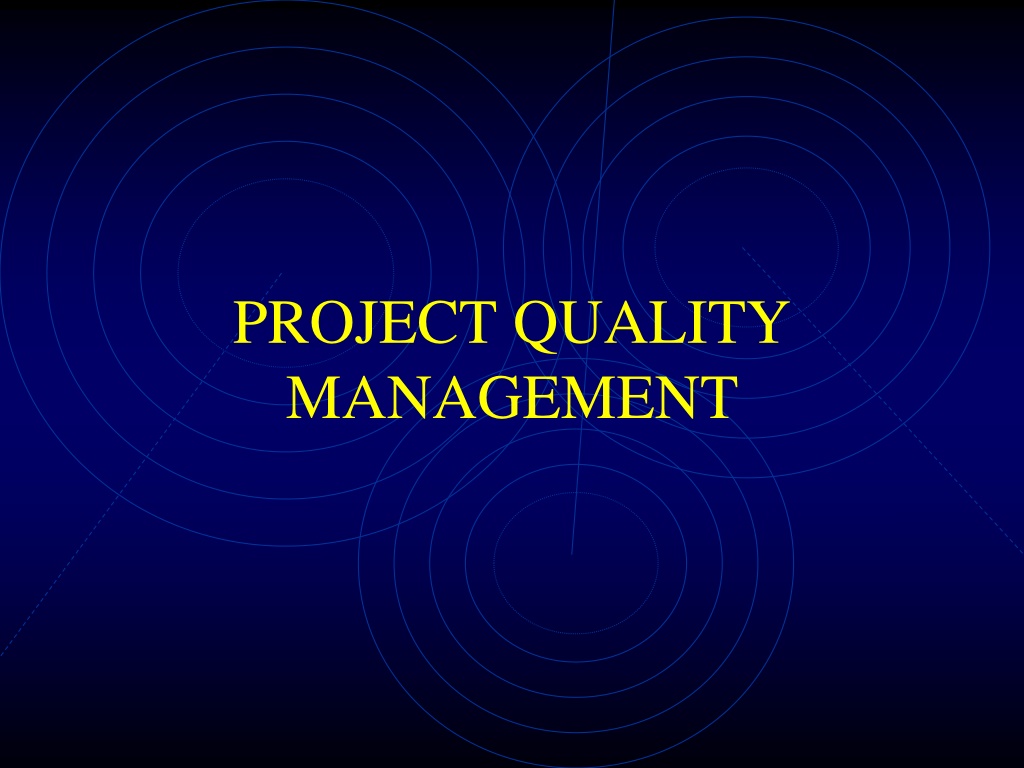



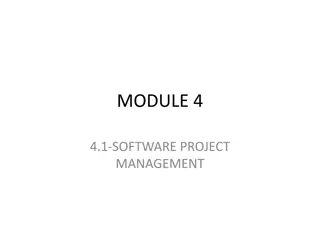
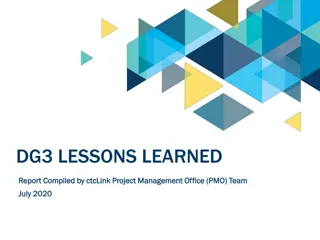
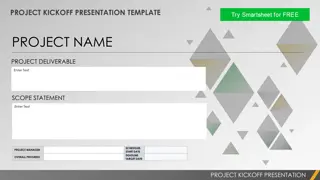
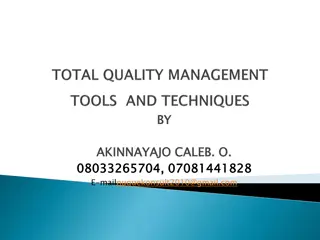

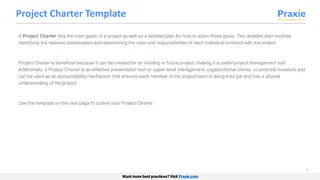
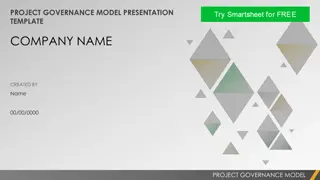
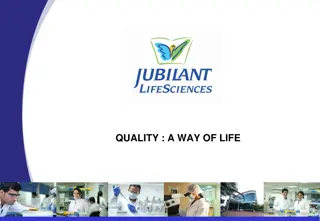
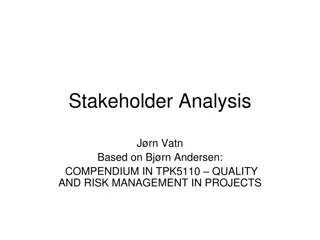
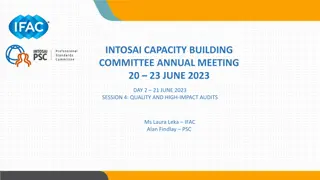
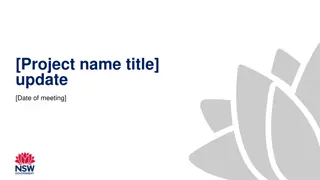
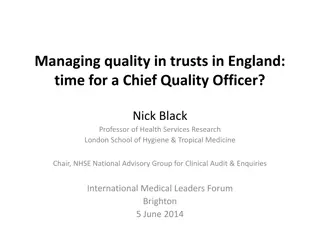

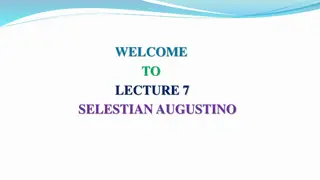
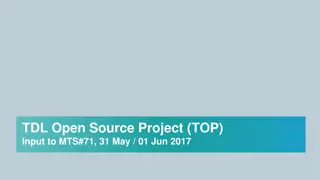
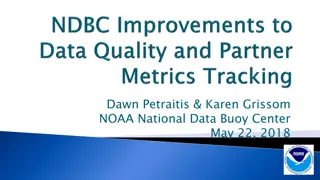
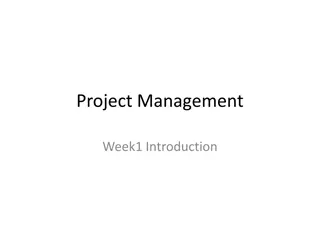
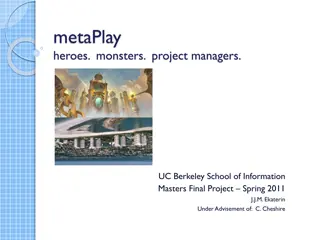
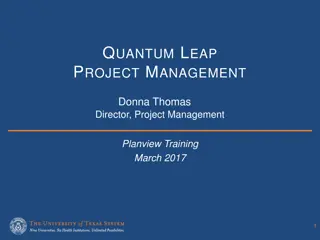
![Project Initiation Document for [Insert.Project.name] [Insert.Project.number]](/thumb/226757/project-initiation-document-for-insert-project-name-insert-project-number.jpg)